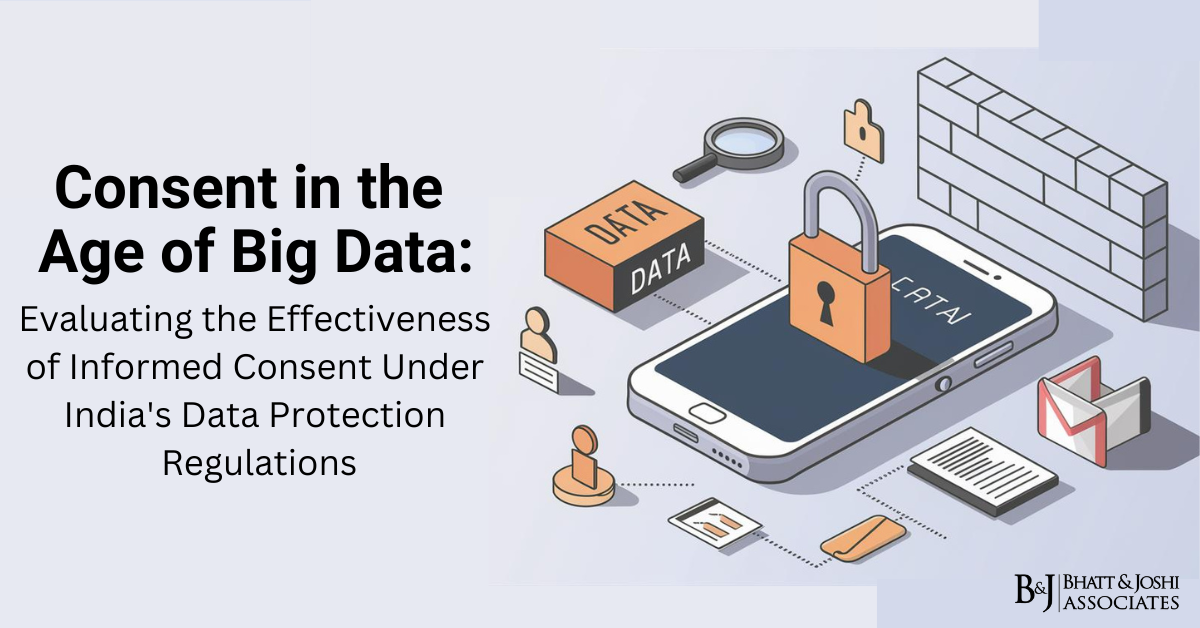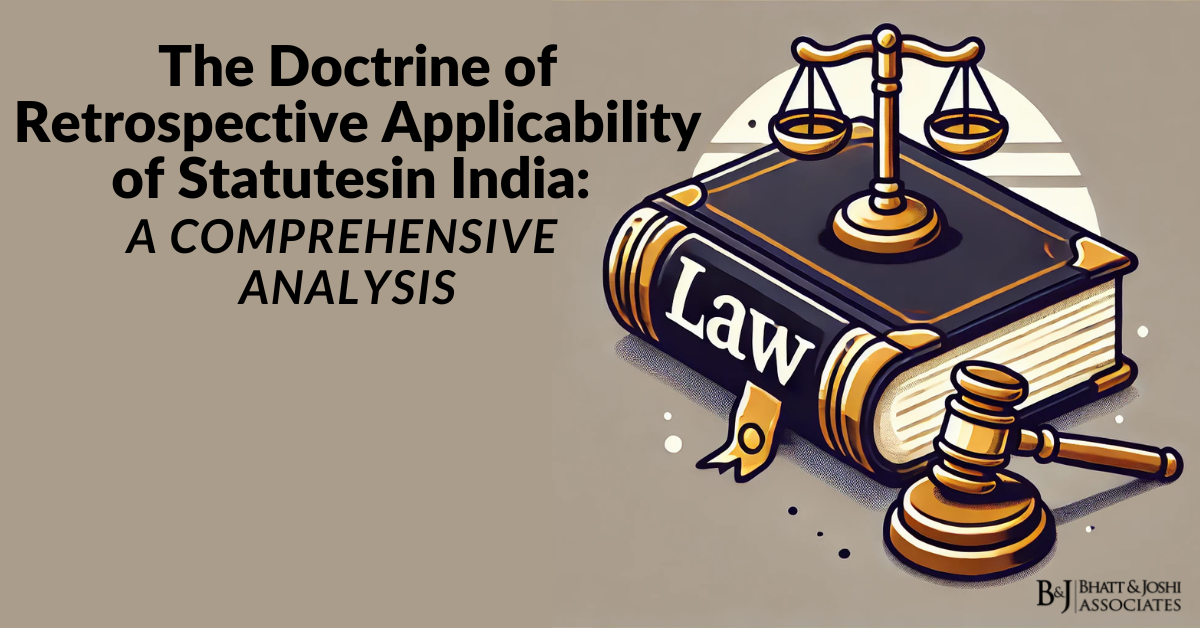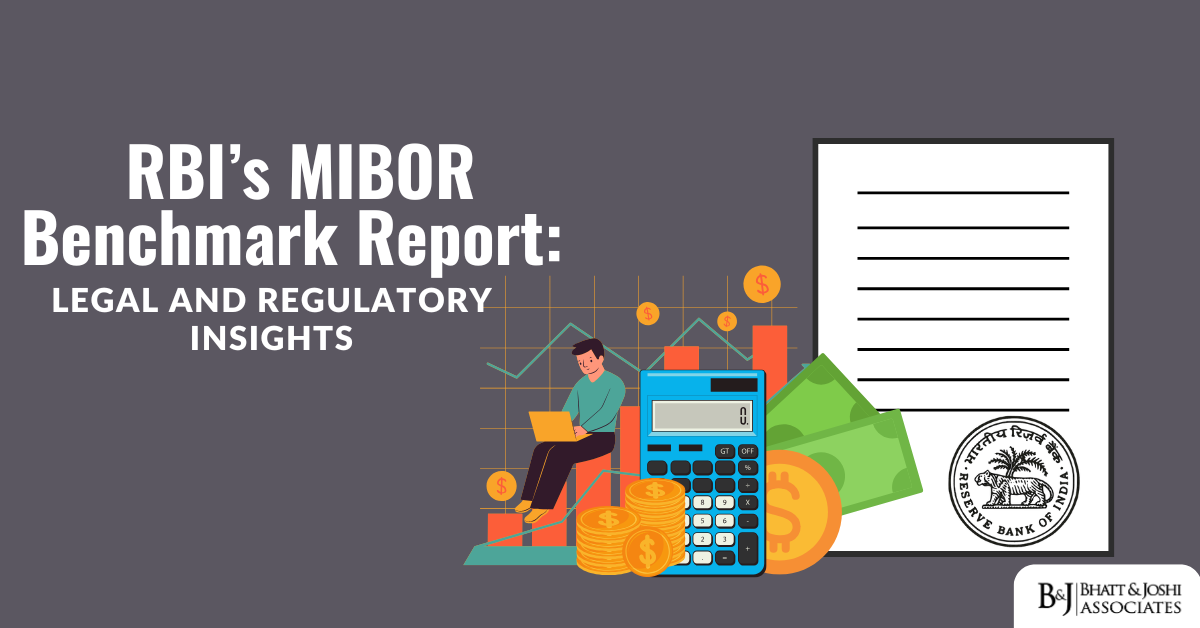Introduction
The advent of digital technologies and the proliferation of big data analytics have fundamentally transformed the landscape of data collection and usage. This transformation has brought with it significant concerns regarding privacy and data protection. At the heart of these concerns lies the principle of informed consent, a fundamental tenet of data protection that requires individuals to be fully informed about how their data will be used and to provide their voluntary agreement. However, the effectiveness of informed consent in the era of big data is increasingly scrutinized, as complex data practices and the imbalance of power between data subjects and data processors challenge traditional consent models. This article critically examines the concept of informed consent under India’s data protection regulations, focusing on its effectiveness in the context of big data and the broader digital economy.
The Concept of Informed Consent Under India’s Data Protection Law
Informed consent is a key principle in ethical and legal frameworks, underpinning the right of individuals to make autonomous decisions. In the context of data protection, informed consent implies that individuals are given clear, comprehensive information about data collection and processing activities, and that they voluntarily agree to these activities. This principle is designed to empower individuals, allowing them to control how their personal information is used and to protect their privacy.
Informed consent serves multiple purposes. It acts as a safeguard against unauthorized data usage, ensuring transparency in data processing activities and building trust between data subjects and data processors. It also provides a legal basis for data processing, helping organizations comply with data protection laws. However, the practical application of informed consent, especially in a digital world characterized by vast data flows and sophisticated analytics, presents numerous challenges.
Legal Requirements for Informed Consent Under India’s Data Protection
India’s data protection landscape has been significantly shaped by the Personal Data Protection Bill (PDPB), which aims to establish comprehensive guidelines for data processing. The PDPB emphasizes the importance of obtaining informed consent from data principals (individuals) before their data is collected and processed. It mandates that consent must be free, informed, specific, clear, and capable of being withdrawn. This means data subjects must be informed about the purposes of data processing, the nature of the data collected, and the identity of the data fiduciary (the entity that determines the data processing activities).
The Bill specifies that consent for processing sensitive personal data—which includes health information, financial details, biometric data, and other sensitive categories—must be explicit. Explicit consent requires a higher standard of disclosure and clarity, ensuring that data subjects are fully aware of the nature and extent of data processing activities. The PDPB also stipulates that data subjects must be able to withdraw consent at any time, and that such withdrawal should be as easy as granting consent.
Challenges in Implementing Informed Consent
Despite the clear legal requirements, implementing informed consent in practice faces several challenges, particularly in the context of big data. One of the primary challenges is the inherent complexity of modern data practices. Data is often collected through various channels, including websites, mobile apps, and Internet of Things (IoT) devices, and can be used for multiple purposes, such as personalized advertising, product development, and market research. This complexity makes it difficult for individuals to fully understand how their data will be used, leading to concerns about the adequacy of consent.
Another significant challenge is information overload and consent fatigue. The digital environment is replete with privacy policies, terms of service agreements, and consent forms that users encounter regularly. These documents are often lengthy and written in complex legal language, which can overwhelm users and discourage thorough reading. As a result, individuals may provide consent without fully understanding the implications, undermining the principle of informed consent. This issue is exacerbated by the phenomenon of consent fatigue, where users become desensitized to frequent consent requests and more likely to consent without due consideration.
Power asymmetry between data subjects and data controllers further complicates the landscape of informed consent. Often, individuals have limited choice but to agree to data collection practices if they wish to access essential services, such as banking, healthcare, or social media platforms. This lack of genuine choice can render consent less meaningful, as individuals may feel compelled to consent despite potential privacy concerns. Additionally, technological and data literacy vary widely among users, affecting their ability to understand and engage with data protection issues. Many individuals may not fully grasp the technical aspects of data processing or the implications of data sharing, which challenges the effectiveness of consent as a protective measure.
Evaluating the Effectiveness of Informed Consent
To evaluate the effectiveness of informed consent, it is crucial to consider whether data subjects can genuinely understand and voluntarily agree to data processing activities. Transparency and comprehensibility are essential components of effective consent. Information provided to users must be clear, concise, and relevant, enabling them to make informed decisions. This involves avoiding overly complex language and ensuring that privacy policies and consent forms are accessible and user-friendly.
Voluntariness and autonomy are also critical factors. Consent should not be coerced or made a condition for accessing essential services, as this undermines the autonomy of individuals. Genuine choice in data sharing decisions enhances the integrity of the consent process. The scope and specificity of consent play a vital role in ensuring that users understand exactly what they are consenting to. Broad or ambiguous consent forms can lead to misunderstandings and reduce the effectiveness of consent as a tool for protecting privacy.
Withdrawal and redress mechanisms are integral to the effectiveness of informed consent. Users must have the ability to easily withdraw their consent and stop data processing if they choose to do so. Additionally, there should be clear and accessible channels for individuals to seek redress if they believe their data has been misused or if their privacy rights have been violated. These mechanisms are crucial for maintaining trust and ensuring accountability in data processing activities.
Case Studies and Real-World Applications
Examining real-world scenarios can provide valuable insights into the practical challenges and effectiveness of informed consent in India. The Aadhaar program, for example, is a national biometric identification system that has been widely implemented across various sectors, including banking, telecommunications, and government services. While Aadhaar aims to streamline identity verification and service delivery, it has faced significant scrutiny regarding privacy and data security. Consent mechanisms within the Aadhaar system have been criticized for lacking transparency and for not providing individuals with sufficient information about the uses of their biometric data. Furthermore, the necessity of Aadhaar for accessing essential services has raised concerns about the voluntariness of consent, as individuals may feel pressured to participate despite potential privacy concerns.
In the realm of mobile applications, the widespread use of apps in India has led to extensive data collection, often with minimal user awareness or understanding. Apps frequently request permissions to access sensitive information, such as location data, contacts, and camera access, sometimes without clearly explaining the reasons or the implications of such data access. This practice can lead to a lack of genuine informed consent, as users may not fully understand what they are agreeing to. The challenge is exacerbated by the design of consent requests, which are often presented in a way that encourages quick acceptance without thorough consideration.
Social media and online platforms also pose significant challenges to the informed consent framework. These platforms often engage in sophisticated data analytics and profiling to deliver targeted advertising and personalized content. While users typically consent to data collection through privacy policies and terms of service agreements, the complexity and length of these documents often mean that users do not fully understand the scope of data collection and use. This lack of understanding can undermine the effectiveness of consent, as users may not be aware of the full extent of data processing activities and their implications for privacy.
The Role of Regulatory Authorities and Stakeholders
Regulatory authorities, such as the proposed Data Protection Authority (DPA) under the PDPB, play a crucial role in ensuring that informed consent is implemented effectively. The DPA is responsible for overseeing compliance with data protection laws, conducting audits, and investigating complaints related to data privacy violations. The authority can also issue guidelines and codes of practice to clarify consent requirements and promote best practices among data controllers.
Stakeholders, including businesses, civil society organizations, and technology developers, also have a critical role in enhancing the informed consent process. Businesses must prioritize transparency and user-centric design in their consent mechanisms, ensuring that users are adequately informed and can easily manage their consent preferences. Civil society organizations can advocate for stronger privacy protections and raise public awareness about data rights and the importance of informed consent. Technology developers can contribute by designing tools and frameworks that facilitate clear, concise, and user-friendly consent processes.
Recommendations for Strengthening Informed Consent
To improve the effectiveness of informed consent in India, several recommendations can be made. First, it is essential to enhance the transparency and accessibility of consent information. This can be achieved by simplifying privacy policies, using plain language, and providing context-specific information that helps individuals understand the implications of data processing. Interactive and layered consent forms, which present information in digestible segments, can also aid in improving user comprehension.
Second, it is crucial to address power asymmetries and ensure that individuals have genuine choices when providing consent. Businesses should offer alternatives for users who do not wish to consent to certain data practices, and consent should not be a mandatory condition for accessing essential services. Regulatory frameworks should include provisions that prevent the exploitation of consent as a blanket authorization for invasive data practices.
Third, efforts should be made to enhance data literacy and public awareness. Educational initiatives and public campaigns can help individuals better understand data protection concepts and their rights regarding personal data. Collaborations with educational institutions and the incorporation of data literacy into school curricula can foster a more informed and empowered public.
Fourth, strengthening oversight and enforcement mechanisms is vital for ensuring accountability and compliance with data protection laws. The DPA and other regulatory bodies should have adequate resources and authority to conduct regular audits, investigate complaints, and impose penalties for non-compliance. Transparent reporting and public accountability measures can also help build trust and ensure that data protection laws are effectively enforced.
Conclusion: Informed Consent in India’s Data Protection Laws
Informed consent is a fundamental principle in data protection, essential for protecting privacy and empowering individuals to control the use of their personal data. However, the effectiveness of informed consent in the digital age is challenged by the complexity of data practices, information overload, power asymmetries, and varying levels of data literacy. India’s data protection regulations, particularly the Personal Data Protection Bill, provide a framework for informed consent, but practical challenges remain in implementing these principles effectively.
Addressing these challenges requires a multifaceted approach that includes improving transparency, providing genuine choices, enhancing data literacy, and strengthening regulatory oversight. By focusing on these areas, India can ensure that informed consent remains a meaningful and effective tool for protecting privacy in an increasingly data-driven world. The ongoing dialogue between regulators, businesses, civil society, and individuals is crucial for refining consent mechanisms and ensuring that data protection frameworks are responsive to the evolving landscape of digital technology and data practices. As India continues to develop its data protection policies, the principles of informed consent will remain central to balancing innovation and privacy in the digital economy.














